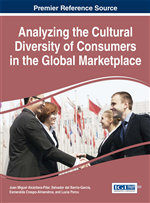 When targeting consumers on a global scale, companies make strategic use of languages in their advertising campaigns. This chapter presents an overview of theories and research regarding the effectiveness of the use of foreign languages (foreign language display, FLD) in advertising. The aim is to bring together theories and empirical studies from various domains, and to show principled explanations for the effectiveness of FLD from two perspectives. The first, psycholinguistic perspective examines the way in which foreign languages in advertising are mentally processed; the second, sociolinguistic perspective links the foreign language use to characteristics of the country where the foreign language is typically spoken. This chapter presents empirical evidence for the benefits and drawbacks of FLD, and identifies areas for further research.
When targeting consumers on a global scale, companies make strategic use of languages in their advertising campaigns. This chapter presents an overview of theories and research regarding the effectiveness of the use of foreign languages (foreign language display, FLD) in advertising. The aim is to bring together theories and empirical studies from various domains, and to show principled explanations for the effectiveness of FLD from two perspectives. The first, psycholinguistic perspective examines the way in which foreign languages in advertising are mentally processed; the second, sociolinguistic perspective links the foreign language use to characteristics of the country where the foreign language is typically spoken. This chapter presents empirical evidence for the benefits and drawbacks of FLD, and identifies areas for further research.
- Hornikx, J., & Meurs, F. van (2015). Foreign language display in advertising from a psycholinguistic and sociolinguistic perspective: A review and research agenda. In J. M. Alcántara-Pilar, S. del Barrio-García, E. Crespo-Almedros, & L. Porcu (Eds.), Analyzing the cultural diversity of consumers in the global marketplace (pp. 299-319). Hershey: IGI Global. [link]
